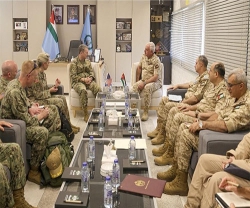Raytheon has manufactured and integrated all required subassemblies in completion of a major milestone for its second Visible Infrared Imaging Radiometer Suite (VIIRS), which will fly on the National Oceanic and Atmospheric Administration's Joint Polar Satellite System-1 spacecraft.
The integrated sensor is now entering testing, on track for delivery in 2015.
“The Raytheon team continues to make steady progress on the second VIIRS instrument, in keeping with our commitment to deliver the completed sensor in 2015,” said Bill Hart, Vice President of Space Systems for Raytheon's Space and Airborne Systems business.
The testing cycle will include two phases. Ambient testing, which began in November, will confirm system-wide mechanical functioning, proper optical measurement of external phenomena and the ability of the electronics module to command the sensor via flight software in a lab at room temperature.
The sensor will then move directly into environmental testing, which simulates conditions during launch and in space, and is the final evaluation before being cleared for customer delivery.
The first Raytheon-built VIIRS is currently flying on the NOAA/NASA Suomi NPP spacecraft, which serves as the precursor to the next generation weather and environmental forecasting Joint Polar Satellite System. The second VIIRS is scheduled to launch on board the JPSS-1 satellite mission in 2017. NASA is developing and acquiring the JPSS-1 mission for NOAA.






















